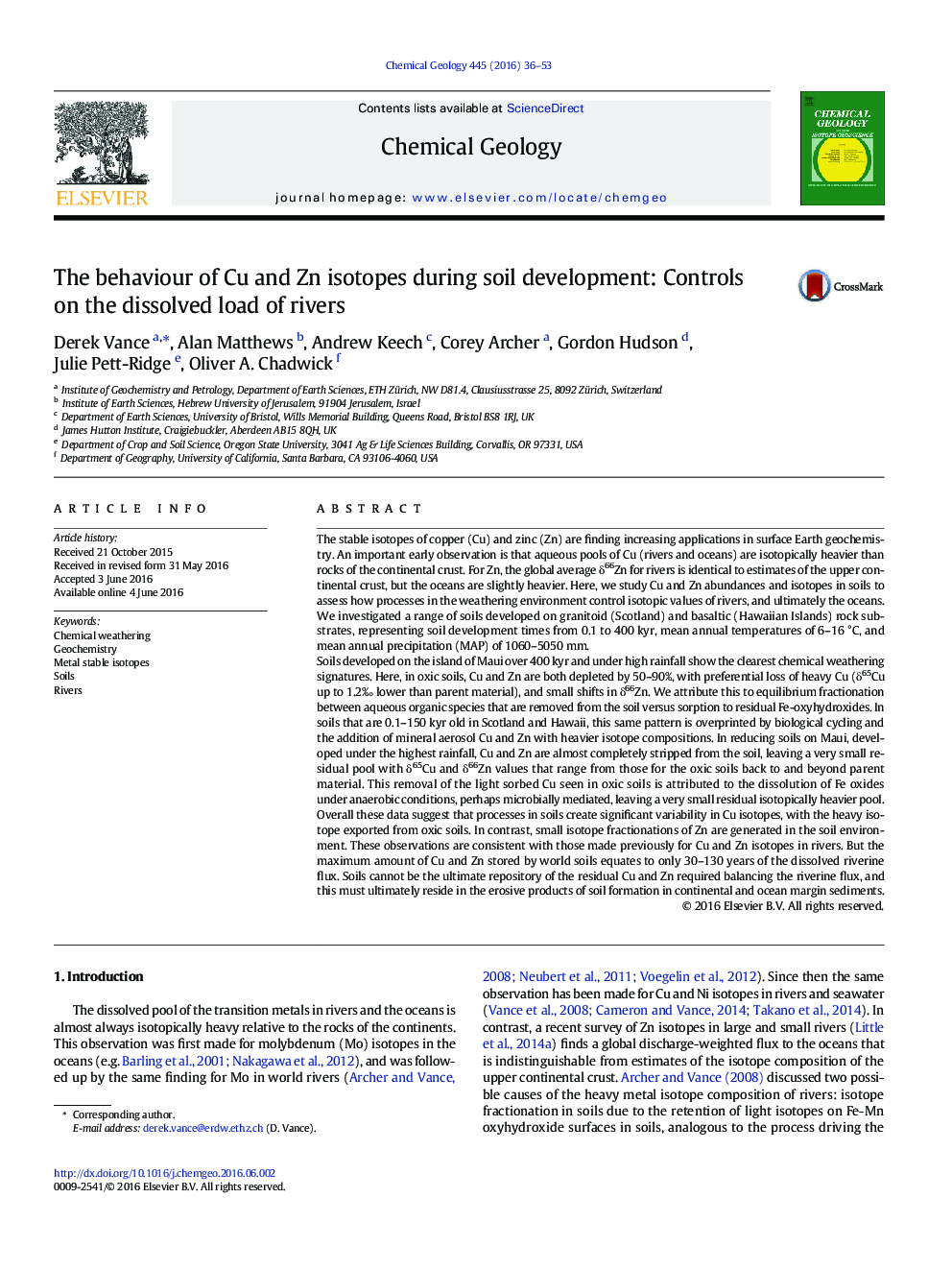| کد مقاله | کد نشریه | سال انتشار | مقاله انگلیسی | نسخه تمام متن |
|---|---|---|---|---|
| 4698150 | 1637529 | 2016 | 18 صفحه PDF | دانلود رایگان |

• Light Cu, and unfractionated Zn, isotopes retained in oxic soils.
• Development of anaerobic conditions can lead to loss of this signature.
• Mineral aerosol addition and biological cycling overprint weathering processes.
• Oxic soils contain Cu-Zn isotopes complementary to riverine dissolved pool.
• Mass balance suggests ultimate fate of complementary soil signature in sediments.
The stable isotopes of copper (Cu) and zinc (Zn) are finding increasing applications in surface Earth geochemistry. An important early observation is that aqueous pools of Cu (rivers and oceans) are isotopically heavier than rocks of the continental crust. For Zn, the global average δ66Zn for rivers is identical to estimates of the upper continental crust, but the oceans are slightly heavier. Here, we study Cu and Zn abundances and isotopes in soils to assess how processes in the weathering environment control isotopic values of rivers, and ultimately the oceans. We investigated a range of soils developed on granitoid (Scotland) and basaltic (Hawaiian Islands) rock substrates, representing soil development times from 0.1 to 400 kyr, mean annual temperatures of 6–16 °C, and mean annual precipitation (MAP) of 1060–5050 mm.Soils developed on the island of Maui over 400 kyr and under high rainfall show the clearest chemical weathering signatures. Here, in oxic soils, Cu and Zn are both depleted by 50–90%, with preferential loss of heavy Cu (δ65Cu up to 1.2‰ lower than parent material), and small shifts in δ66Zn. We attribute this to equilibrium fractionation between aqueous organic species that are removed from the soil versus sorption to residual Fe-oxyhydroxides. In soils that are 0.1–150 kyr old in Scotland and Hawaii, this same pattern is overprinted by biological cycling and the addition of mineral aerosol Cu and Zn with heavier isotope compositions. In reducing soils on Maui, developed under the highest rainfall, Cu and Zn are almost completely stripped from the soil, leaving a very small residual pool with δ65Cu and δ66Zn values that range from those for the oxic soils back to and beyond parent material. This removal of the light sorbed Cu seen in oxic soils is attributed to the dissolution of Fe oxides under anaerobic conditions, perhaps microbially mediated, leaving a very small residual isotopically heavier pool.Overall these data suggest that processes in soils create significant variability in Cu isotopes, with the heavy isotope exported from oxic soils. In contrast, small isotope fractionations of Zn are generated in the soil environment. These observations are consistent with those made previously for Cu and Zn isotopes in rivers. But the maximum amount of Cu and Zn stored by world soils equates to only 30–130 years of the dissolved riverine flux. Soils cannot be the ultimate repository of the residual Cu and Zn required balancing the riverine flux, and this must ultimately reside in the erosive products of soil formation in continental and ocean margin sediments.
Journal: Chemical Geology - Volume 445, 16 December 2016, Pages 36–53